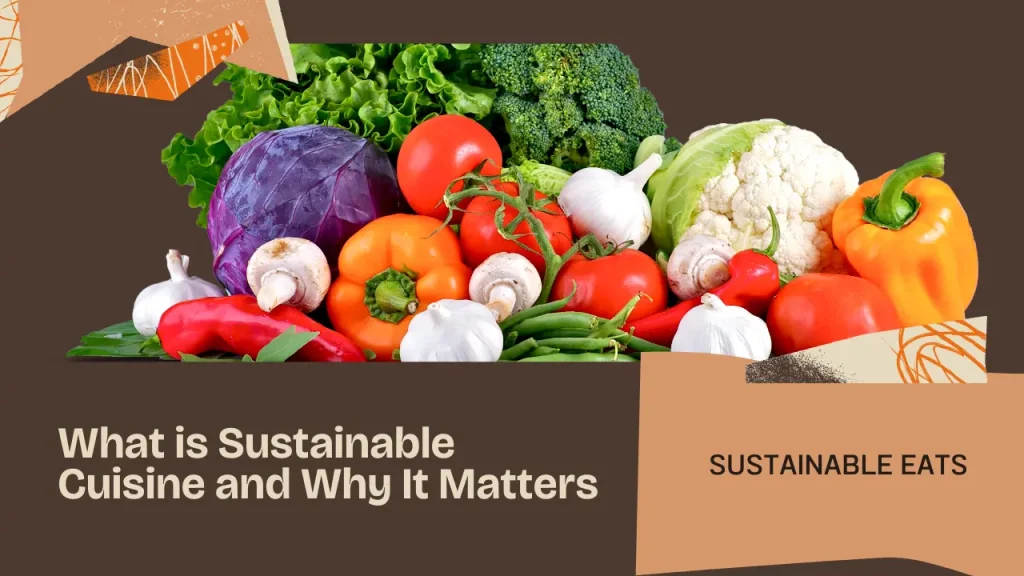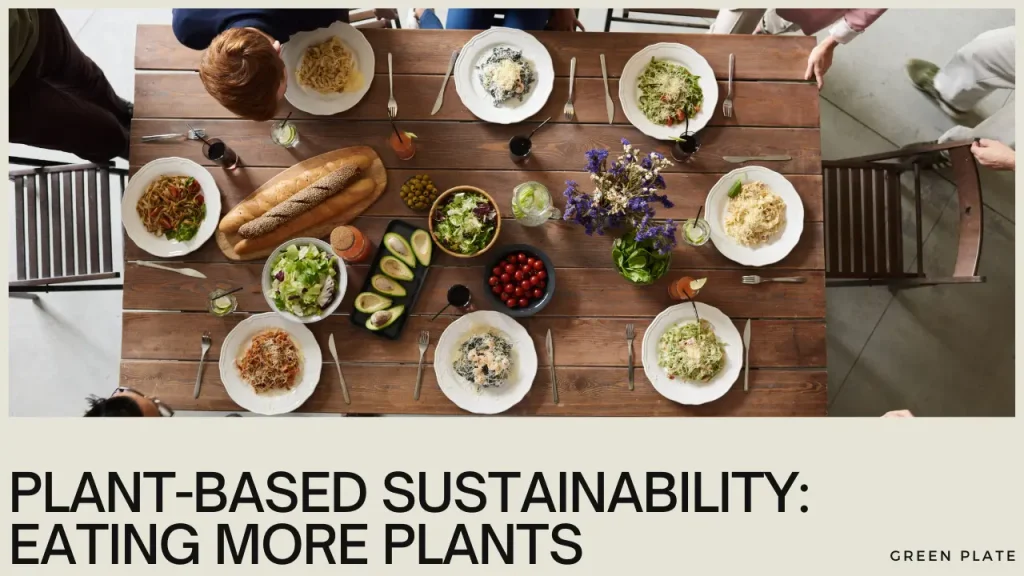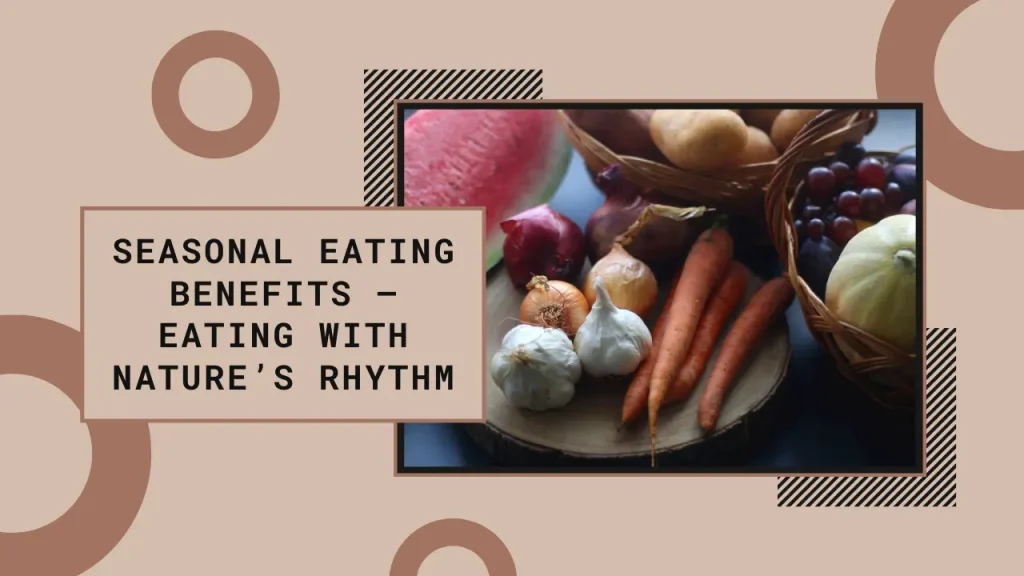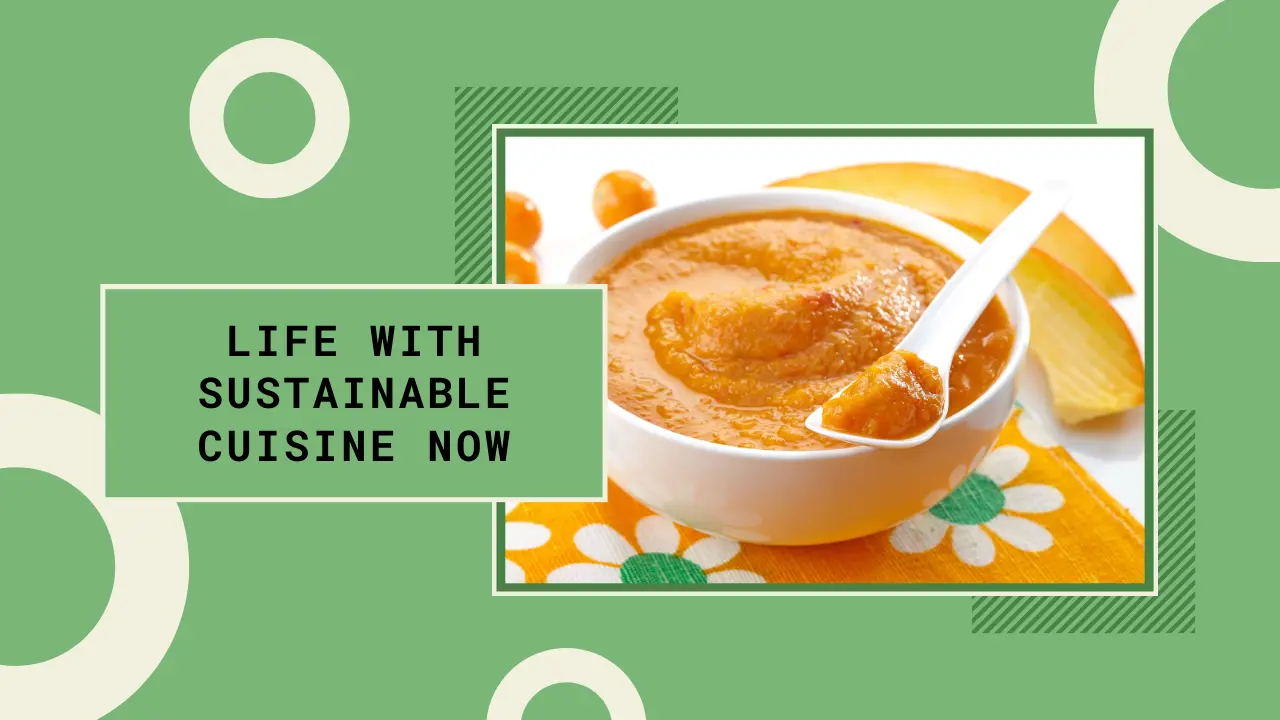Eating well can help the planet. That’s what sustainable cuisine is all about. It means making food choices that are good for you and the Earth. Simple changes, like local food sourcing, zero-waste cooking, plant-based meals, and seasonal eating, can make a big difference. In this guide, you’ll learn easy ways to eat better while helping the environment. Let’s get started!

What is Sustainable Cuisine?
Sustainable cuisine means eating in a way that helps the planet. It’s about making smart food choices. This can be as simple as wasting less food, eating local, and choosing more plants.
Why does this matter? The way we eat affects the Earth. Some foods use more water, land, and energy. Others create less waste and pollution. Choosing better foods can lower your carbon footprint and keep the planet healthy.
Eating this way is good for you too! Fresh, local food has more nutrients. Eating less processed food can improve your health. Plus, you’ll save money by wasting less.
Sustainable eating is not about being perfect. It’s about small, easy changes. Let’s start with one simple step—buying local!
Local Food Sourcing – Why It Matters
Eating local is one of the best ways to support sustainable cuisine. It means buying food grown close to home.
Why is this important? Local food travels less. That means fewer trucks, planes, and ships burning fuel. Less travel also means fresher, tastier food on your plate.
Supporting local farmers keeps communities strong. It helps small businesses and keeps money in the local economy. Plus, local produce is often grown with fewer chemicals. That’s better for your health!
How can you eat more local food? Visit a farmers’ market. Check food labels for local options. Try growing herbs or veggies at home. Even small choices can make a big impact.
Zero-Waste Cooking – Making the Most of Every Ingredient
Did you know that one-third of all food goes to waste? That’s a lot of food—and money—thrown away. Zero-waste cooking helps you use every part of your food.
Start with planning. Make a shopping list and buy only what you need. Store food properly to keep it fresh longer. Use leftovers in new meals instead of tossing them.
Get creative with food scraps! Veggie peels can make crispy snacks. Overripe fruit is perfect for smoothies. Stale bread? Turn it into croutons!
Less waste means saving money and helping the planet. It’s a win-win. Ready to try? Start small and build new habits. Every step counts!

Plant-Based Sustainability – Eating More Plants for a Greener Planet
Have you ever thought about how your food choices impact the planet? Eating more plants is one of the easiest ways to practice sustainable cuisine. It’s not about going vegan overnight—it’s about making small swaps that are better for you and the environment.
Think about it: Producing meat takes a lot of land, water, and energy. On the other hand, plants use fewer resources and create less pollution. By simply swapping a beef burger for a lentil burger, you’re lowering your carbon footprint.
Start small! Try a Meatless Monday or add one plant-based meal to your week. Love spaghetti? Use lentils instead of ground beef. Enjoy tacos? Swap meat for black beans. You’ll be surprised how delicious and filling plant-based meals can be.
Eating more plants isn’t just good for the Earth—it’s good for you too! Fruits, veggies, and whole grains are packed with nutrients. Plus, plant-based meals can be budget-friendly. Give it a try and see how easy it is to make a difference.
Climate-Friendly Diet – Making Smarter Food Choices
Did you know that the food you eat affects climate change? Some foods produce more greenhouse gases than others. A climate-friendly diet means choosing foods that are better for the planet.
Here’s a simple rule: The closer food is to its natural state, the better. Whole foods like fruits, veggies, nuts, and grains have a smaller carbon footprint than processed foods. A potato, for example, is better than a bag of potato chips.
Another easy swap? Eat more local and seasonal foods. When food travels long distances, it burns more fuel. Eating local helps reduce emissions and supports nearby farmers. Plus, local food is fresher and tastier!
And here’s a fun fact: Dairy and red meat have the biggest environmental impact. You don’t have to give them up completely, but cutting back makes a big difference. Try plant-based milk, tofu, or chickpeas as easy alternatives.
Eating for the planet doesn’t mean giving up your favorite foods. It’s about making smarter choices—one meal at a time!

Seasonal Eating Benefits – Eating with Nature’s Rhythm
Have you ever noticed that strawberries taste sweeter in summer? That’s because they’re in season! Seasonal eating means enjoying fruits and veggies when they naturally grow, rather than when they’re shipped from far away.
Eating with the seasons is great for the environment. When food is in season, it doesn’t need artificial help to grow. That means fewer pesticides, less water waste, and lower energy use. It’s a win for the planet!
It’s also healthier! Seasonal produce is fresher, packed with nutrients, and often cheaper. Think juicy summer tomatoes, crisp autumn apples, or hearty winter squash. Plus, eating seasonally adds variety to your meals, so you never get bored.
Not sure what’s in season? Check farmers’ markets or look for signs at the grocery store. Try a new seasonal recipe and experience the amazing flavors nature has to offer. Small changes like this make sustainable cuisine easy and fun!
Getting Started – Small Steps for Big Change
Feeling stressed? Don’t worry! Sustainable eating isn’t about being perfect—it’s about making progress. Here are some easy steps to start:
Start small – Focus on one habit, like eating one plant-based meal a week or wasting less food.
Plan ahead – Make a meal plan to avoid buying too much food.
Shop smart – Choose local, fresh, and simple foods when you can.
Use everything – Get creative with leftovers and food scraps.
Learn more – Read blogs, books, or join online groups about sustainable eating.
Remember, every small step matters. The more you try, the easier it gets!
Conclusion
Sustainable eating helps the planet, your health, and your wallet. By making small food choices, you can cut waste, help local farmers, and reduce your carbon footprint.
Start today! Try one simple change. Whether it’s buying local, reducing food waste, or eating more plants, every step matters. Let’s eat well and help our planet—one meal at a time.

